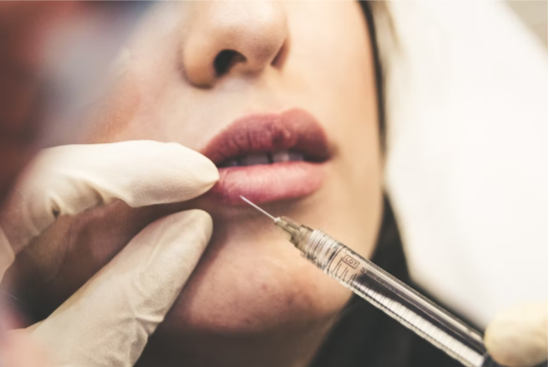Rhytidectomy or Facelift: What To Expect?

Rhytidectomy, more popularly known as a facelift, can help you look younger. The process involves
removing excess fat and skin. It also tightens the underlying muscles and repositions the fat.
However, note that facelift surgery is not a one-time thing but an ongoing process. You l will need follow-up
treatments every few years to maintain your youthful appearance.
Here are a few essential things you must know before you choose facelift surgery .
Facelift Procedures Available
Facelifts can be non-surgical or surgical. If you go with the former, you wont go under general anesthesia
or other medications. The cosmetic surgeon will make an incision along your hairline or behind your ear.
The type of non-surgical facelift a patient gets depends on their needs. They can choose from laser lifts,
Kybella, laser treatments, ultrasound, dermal fillers, botox, and fat transfer. You can also try the famous
technique known as "liquid facelift." This procedure combines Botox and dermal fillers. It yields similar
results to facelifts without surgery or anesthesia.
Scars after non-surgical facelifts are not that visible. The sutures are usually fine, and the incision areas
are well-hidden.
If you go with the surgical option, you will need to undergo anesthesia before the doctor cuts through your
skin or muscle. The surgeon will pull back the skin to tighten it. They will also remove excess fat and
muscle under the skin.
Then, they stitch everything up to prevent bleeding and to help the skin heal well over time. Unlike non-
surgical facelifts, stitches for surgical facelifts may be more visible. But this depends on the incision area,
and good surgeons know how to camouflage these. They will create precise incisions or use specialized
suture techniques to promote minimal scarring.
What should you do to prepare for a facelift?
A facelift is a major procedure, so you should make lifestyle changes before surgery. These changes will
prepare you for it and ensure the best possible outcome.
You have to prepare your skin for surgery, too. You must take precautions to avoid any skin damage.
These include staying away from the sun and moisturizing your skin daily. Prolonged exposure to the sun
can cause inflammation. Consequently, inflammation can lead to slow healing and more bleeding during
surgery.
Your attending surgeon might also ask you to stop smoking or drinking alcohol for at least two weeks
before the procedure. This is to lower the risk of bleeding.
You also must be careful about the food, vitamins, and supplements you take before surgery. The
following are some of the foods you should avoid the night before your surgery:
● High-fibre food like lentils, beans, whole-grain bread, oatmeal, and whole-wheat pasta
● High-fibre fruits like oranges, apples, pears, and raspberries
● High-fibre vegetables like broccoli, peas, and artichokes
It will be hard for the body to break down fibre. Hence, it stays longer in your intestine and may
complicate the surgery.
A few weeks before your surgery date, try to avoid taking supplements. Specifically, avoid taking Vitamin
E and C since these can increase the risk of bleeding.
What to expect during a facelift?
Before the surgery, you will meet with your doctor to discuss the procedure and get answers. You will then
have an exam where the surgeon checks your skin and skin tissues. This is to ensure no underlying
health issue would make the surgery unsafe.
During the surgery, the surgeon Rhytidectomy or Facelift make small incisions around your ears. They will lift your facial skin
using specialized devices like microsurgery, Metzenbaum and Mayo, and facelift scissors. They will
remove excess fat under your chin, cheeks, and jowls using liposuction techniques.
They will repeat this process until they remove all excess fats in your problem areas. The surgeon will
then suture together the tiny incisions they made. This ensures that the wounds heal without leaving
visible scarring on the skin surface.
What happens after facelift surgery?
The first things to expect are staples or stitches on your incisions. Your surgeon will remove these a week
after your surgery. They will also use a bandage to cover the cut. You can wrap your neck and head with
gauze if you wish. You can also use an elastic bandage around your head and chin. You can remove this
a day after your facelift surgery.
Your doctor might also place a drain to get rid of excess neck fluid and blood. Ask your doctor how to
track the amount of fluid draining and how to care for yourself at home.
You can also expect to feel pain two to four days after surgery. There might also be bruising and swelling
that could worsen before they get better. Most people feel better and recover after the 4th or 6th week.
Yet, it might take three to four months to see the desired results.
Know What You Getting Yourself Into
It doesn’t matter if you aiming for a surgical or non-surgical facelift. Knowing your options and what
you’re setting yourself up for is best. When you consult your cosmetic surgeon, ask questions, especially
the hard ones.
Apart from that, do your research. It may be a common procedure, but no two people are alike. What may
work for one may not be suitable for the other. The goal is for you to consider all possibilities and be
ready for them.
VISIT FOR MORE ARTICLE : bestpost.org



